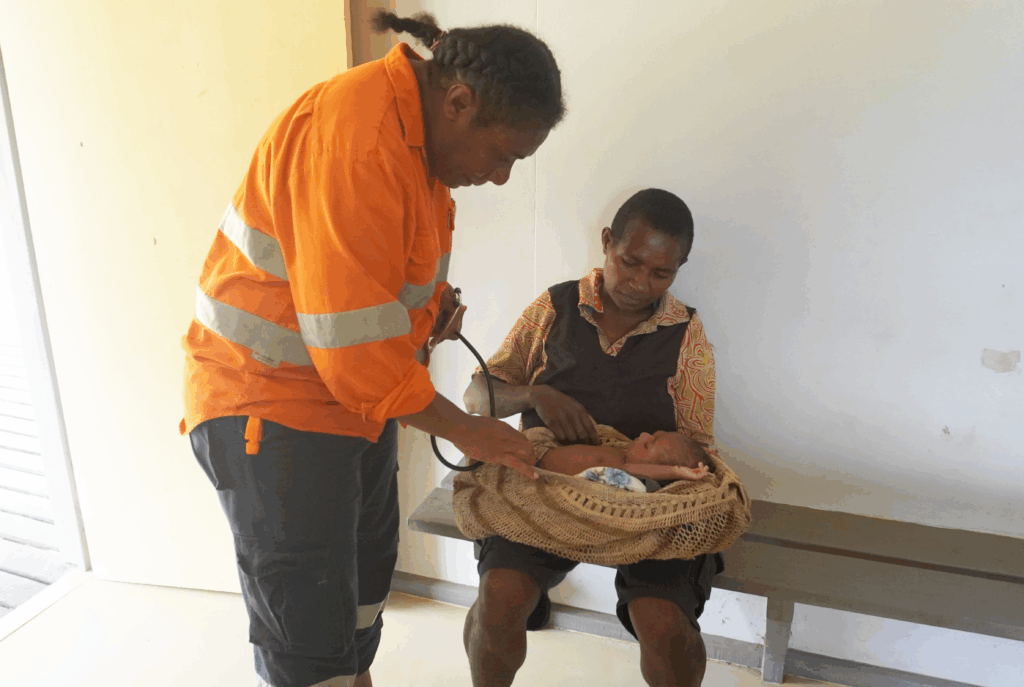
Frieda River Limited (FRL) and the Ambunti District Hospital recently joined forces in delivering a joint integrated health program that covered seven landowning communities, and neighbouring communities, in the Frieda River area.
Frieda River has been working closely with Ambunti and Telefomin district health services to extend health support within communities who often will go without healthcare due to the remote location.
The program involved maternal and child health clinics that was delivered to 342 women and children and included vaccinations, antenatal consultations and family planning.
A total of 1,238 patients were treated for common outpatient related ailments. The program included a targeted tuberculosis (TB) screening initiative to detect TB and formulate treatment plans. The TB screening was led by FRL health extension officer, Magdeline Nenikuro and assisted Mr Francis Tamalako, a lab technician based at the Ambunti District hospital.
“TB is a prevalent health issue in PNG and can cause serious complications and even death. By visiting remote communities, we can reach many people who don’t have regular or easy access to TB testing, diagnosis and treatment,” Ms Nenikuro.
Patients were referred to Mr Tamalako who had chronic cough, weight loss, night sweats and he collected a sample for testing at Ambunti District Hospital for testing. Patients who tested positive were informed and referred for treatment at the hospital.
The initiative is one of the many ways FRL has focused on supporting primary health care as part of the social investment in communities.
“Since 2014, we have been investing in primary healthcare for our communities with health with programs, community infrastructure and even supporting complex and specialised surgeries, in the wider Sepik region” FRL Country Manager, Dr Joel Hamago (PhD) noted.
“FRL continues to support the five aid post facilities in the Frieda River catchment, by procuring basic medical drugs and supplies. The Paupe aid post is the busiest, serving communities in the Upper Sepik River area,” Dr Hamago continued.
